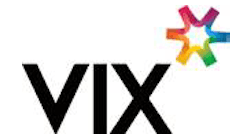Why Integration Between Fixed-Route Transit and MOD Will Transform the Traveler's Experience
The transportation sector today is an exciting space, with new players entering to meet the heightened demands from commuters calling for a better travel experience and the ability to rely less on individually owned cars.
Car ownership, particularly in the U.S., is declining as travelers choose to depend on multi-modal transit alternatives. A three-year study by University of California, Berkeley's Transportation Sustainability Research Center found that 7 to 10 percent of Car2Go customers that were surveyed had decided against purchasing a vehicle. Census data from 2010 to 2015 likewise pointed to a decline in car ownership among millennials, with Seattle, Detroit, Washington, D.C., New York and San Francisco all showing a decrease in the number of cars per household.
With a rise in demand for a multi-modal transit experience, many of these new-to-market options, including car sharing, ride sharing and bike sharing, could be perceived as competition for traditional transit service providers, but there are potentially far greater benefits in them coming together as allies.
Historically, the public transportation industry has focused on increasing ridership, particularly in city centers and densely populated areas, because ridership volume determines transit funding. While increases in the cost of living are compelling more and more people to move outside of the cities into the suburbs, many still rely on employment in the city, necessitating a cheap, easy and quick way to commute. This has created new demand for transit options in previously underserved areas, offering real potential for transit to gain new riders.
The problem, however, is that public transportation has not been set up to provide service beyond the urban city, which creates a new challenge for operators. Some transit agencies have taken strides to enable accessibility for those outside the core fixed-route infrastructure. Flex-route and vanpools are both good examples of offerings aimed at expanding transit’s footprint beyond the traditional fixed-route service area. But to deliver a better customer journey for everyone, agencies should consider full integration with MOD providers.
Game On
The impetus for this integration, which often starts with the desire for a better commute, is something that has evolved organically. In spite of efforts already made to meet travelers’ changing needs, the emergence of new and varied players in the MOD space has created more urgency for transit agencies to evaluate how they can realize the convenience of more personalized transportation capabilities, and in doing so address the first- and last-mile problem that often serves as a barrier to new riders.
As traffic intensifies and roads become more congested, travelers are faced with a difficult choice of convenience versus the cost of owning and commuting in a car. For operators, it is all about balancing that trade-off and thinking about ways to incorporate MOD to make the transit commute accessible and incentivize riders to leave their car at home, or give it up entirely.
The competition in this space, as with all competition, is generally a positive force that can encourage a push toward new and better ways of solving the same problem. But operators must prioritize maintaining and improving their coverage, expanding the reach of the transit network.
The argument that MOD will replace public transportation is perhaps a step too far, but there is no question that on-demand options serve as another tool in the kit to create a more robust rider experience. For example, car-sharing initiatives, such as Car2Go, ReachNow and ZipCar — where the traveler can pick up a car, drive it to another destination and only pay for the duration of that trip — are great options that increase flexibility for the rider. Combining services, allowing a rider to use public transit for a majority of his or her journey but use an on-demand service such as car sharing to cover the first or last mile, enables the optimized experience that riders are looking for today.
Ultimately, it comes down to a cost-convenience trade off. Historically, public transportation has been the cheapest option compared to private car ownership, though often at the cost of convenience. Operators need to investigate how these complementary services can be incorporated to make a viable option that comes at a lower cost than car ownership. In addition, any convenience in terms of consolidation of bookings and payments across multiple services reduces friction for the rider and makes the multi-modal option more appealing.
Technically Possible
Operators can also see the potential benefits of a deeper integration with MOD services, which are as much about cost savings for them as for the rider. However, the challenge is figuring out how to work together with MOD providers and, importantly, ensuring the right technologies are in place so they can be leveraged to foster a traveler-centric experience.
At a conceptual level, the pervasiveness of smartphone technology has opened the door for a more personalized travel experience: these devices track location, have sophisticated capabilities to support route planning and can provide a range of options for riders to get from point A to B using a variety of services.
The planning aspect is not a simple problem to solve, but headway has already been made by a number of companies to establish sophisticated solutions that enable complex planning, incorporating mix and match opportunities across different modes, potentially at different cost points, from different service providers.
In addition to end-user developments that will enable sophisticated route planning and integrated payment options, the technology will also need to facilitate back office solutions that allow a payment to be settled, split and distributed to those providers who rendered services for the passenger’s journey. Thankfully multi-agency clearinghouse technology is fairly well established in transit today, and the incorporation of additional MOD providers does not present significant technical challenges.
The success of a multi-service journey will rely to some extent on the ability to provide real-time updates, both to the customer and MOD drivers. The demand for immediate and seamless communication has never been greater, particularly in the transit sector where delays and cancellations occur. As a result, the pervasiveness of mobile network infrastructure is an essential ingredient to enable this kind of integration.
Given that mobile planning and booking, multi-provider clearing and settlement, and ubiquitous cellular and Wi-Fi network access exist today, it comes back to how all the players can reach an agreement that is complementary rather than competitive.
A Question of How and When?
To draw MOD service providers towards integration, the benefits to them need to be clearly identified, but the winning strategy will be to make it an attractive option for all players. For many, it boils down to the bottom line, so a clarification of how the payment process works, for example, will help them to understand their revenue stream.
On the other hand, if the cost of a multi-service experience is driven too high, the travelling public will push back and reject the concept. That said, there will need to be some incentive for service providers to participate. Successful integration will hinge on getting this balance right and negotiating terms to support the underlying technology innovations. There is a lot of hard work still to be done in this respect.
But this is not all an uphill battle: there are different levels of integration, and a simple use case — where integration with MOD providers without having a single booking/payment option — could exist today. In addition, agencies are already actively working on incorporating single payment solutions, so proofs of concept to demonstrate this capability could come to fruition in the next couple of years.
Importantly, the industry must keep the wheels of innovation turning because amongst all the solutions that come to the table over the next three to five years, we may in fact discover the one approach that takes us all forward; something that is sustainable and can be implemented across multiple transport operators on a more global basis.
Nick Halden is a solutions specialist with Vix Technology.




